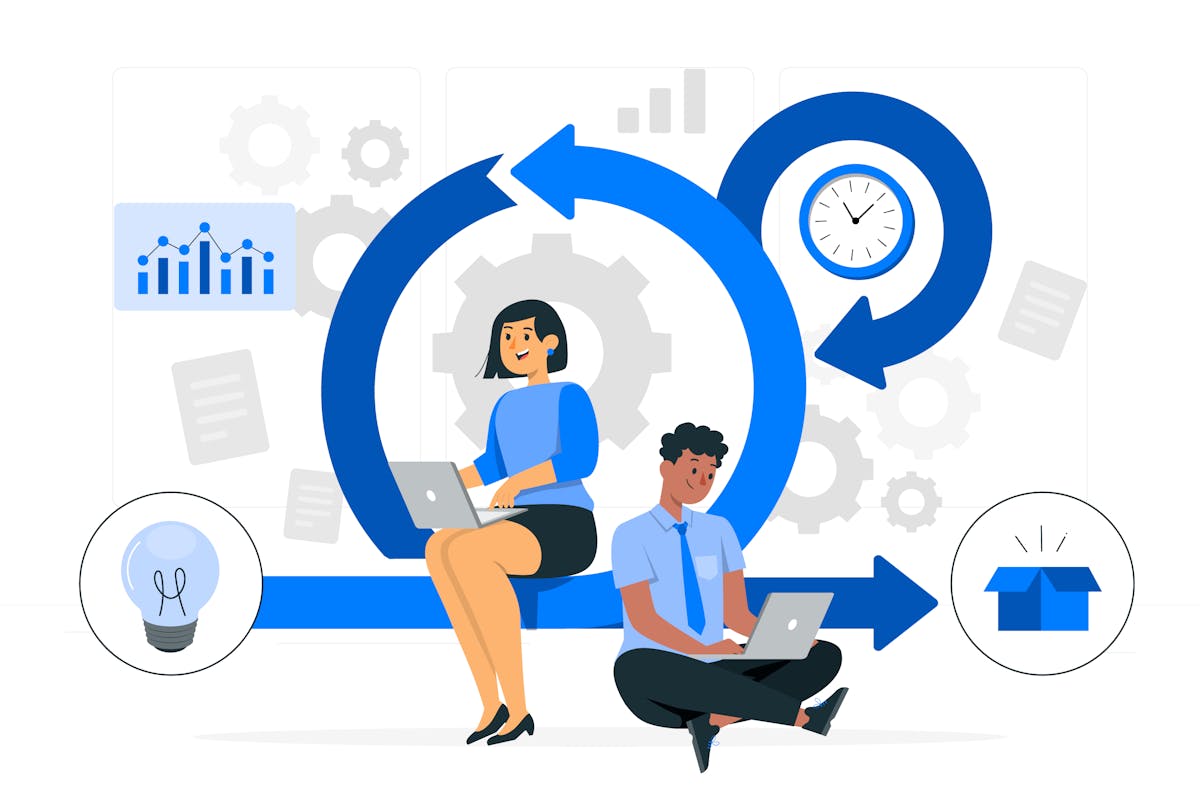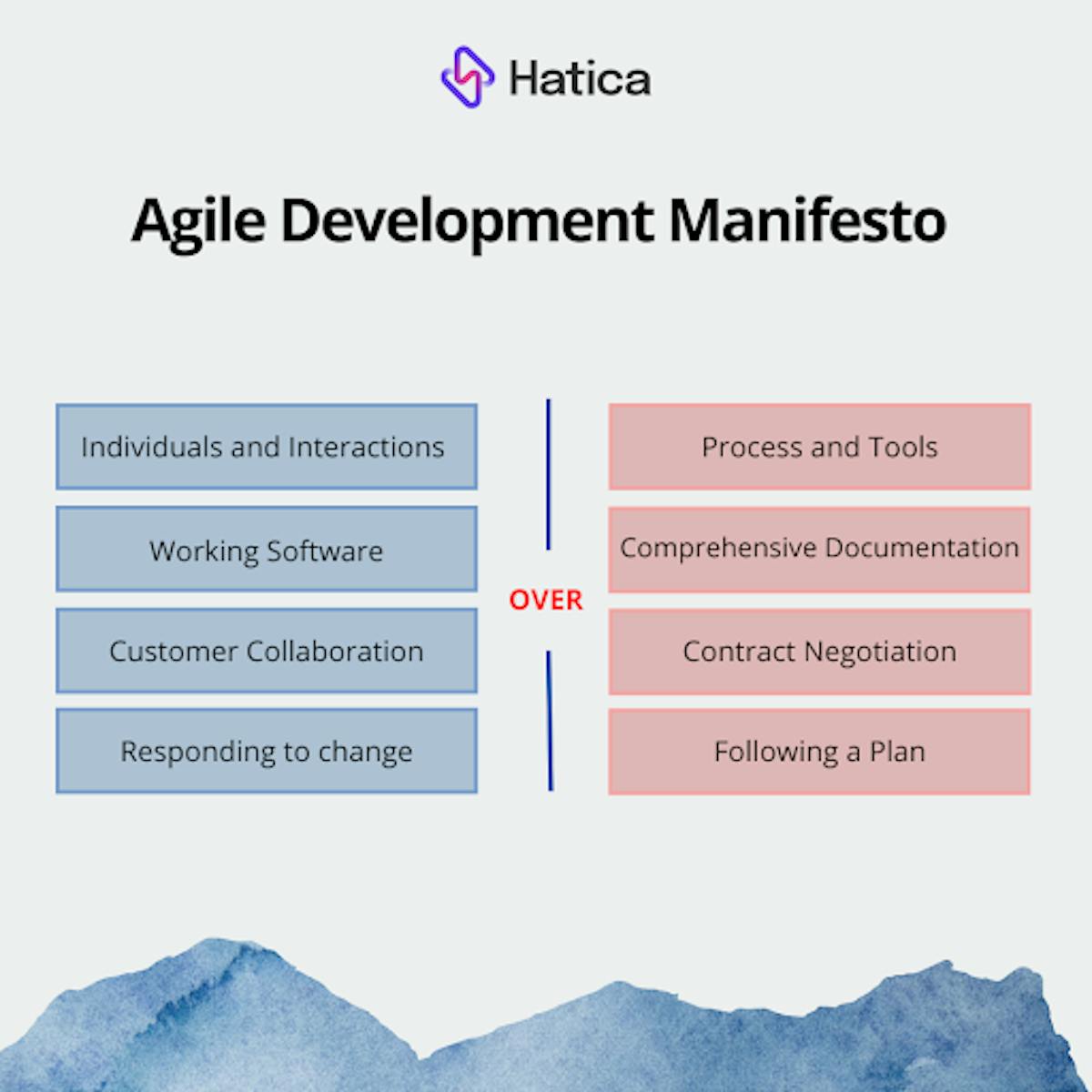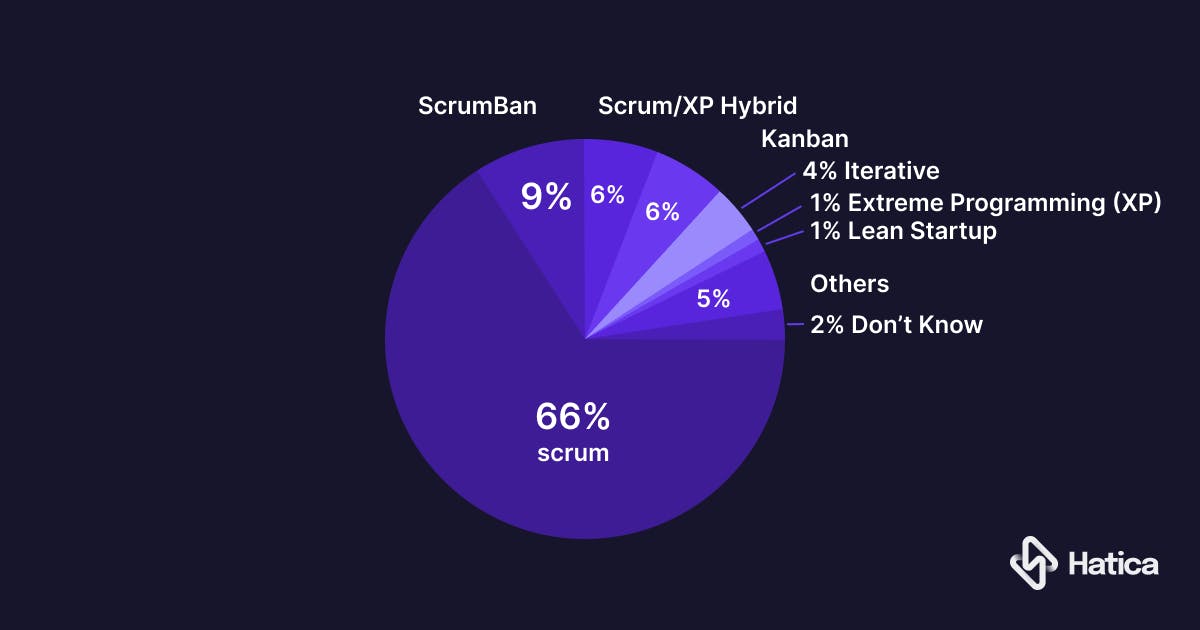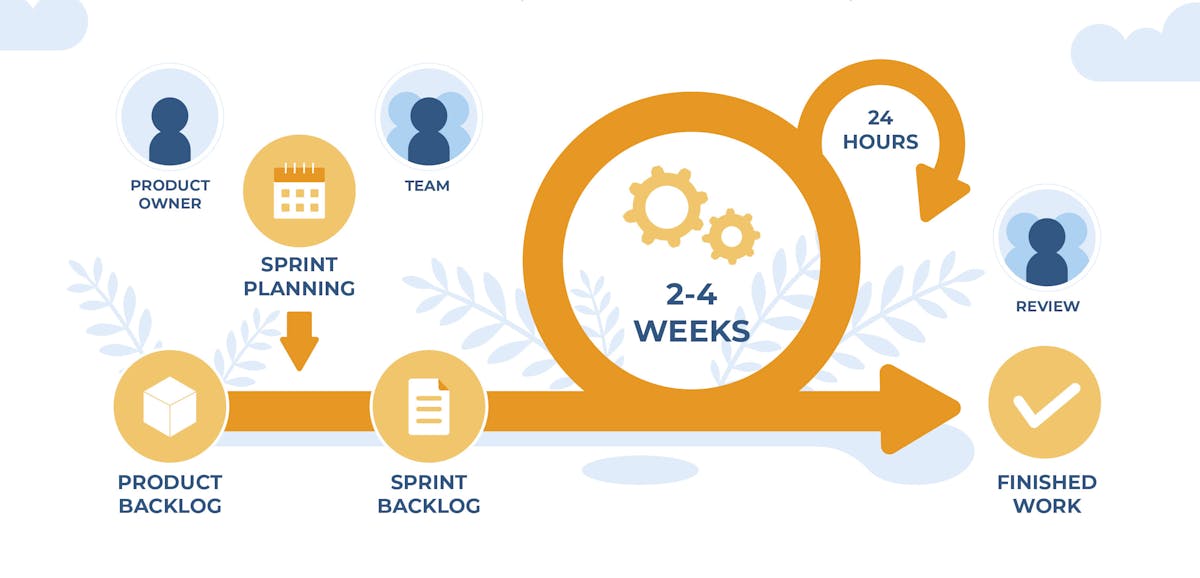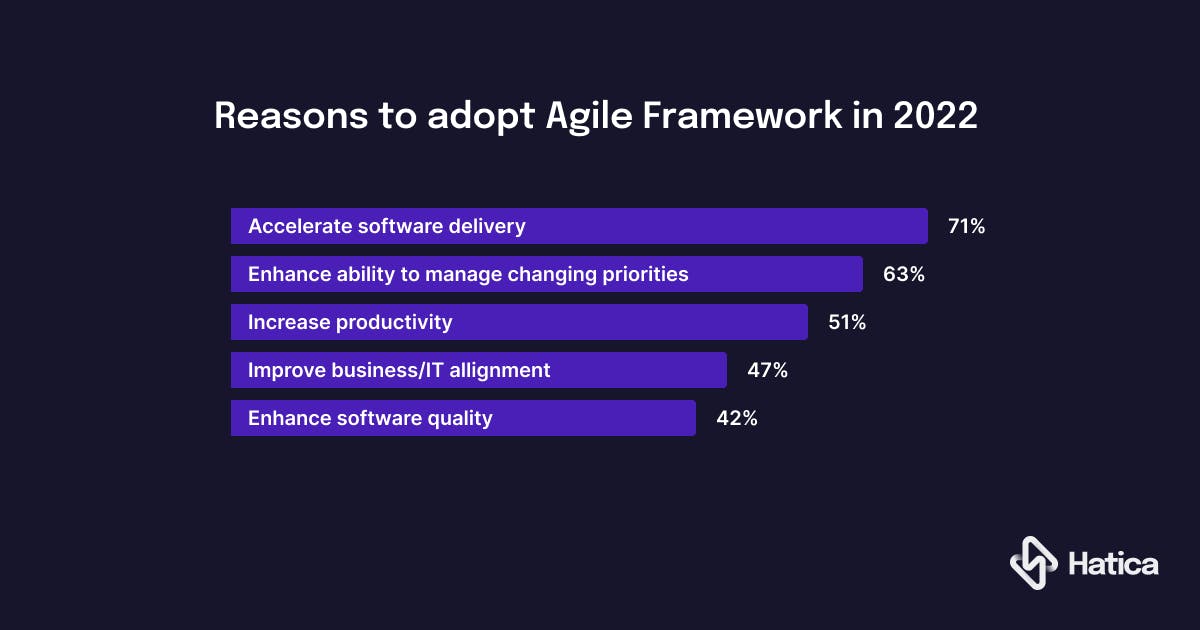Unlike the waterfall approach, agile methodology divides work into actionable items, called sprints, enlist feedback, and reprioritize work as per business needs and market changes.
What is Agile Scrum Methodology?
Agile Scrum is a popular way to make software. It's like teamwork on a short schedule, usually a few weeks. Teams work together on parts of the project during these short times, so they can keep checking and fixing things.
This method helps teams plan better, manage all the time, and give useful stuff to customers sooner. It's a great way for teams to work together, change things easily, and make customers happy with what they get.
How Does Agile Scrum Work?
Agile Scrum works by breaking down big projects into smaller parts, called "sprints," usually a few weeks long. Teams work together during each sprint to finish a piece of the project. They talk a lot to make sure they're on the right track and fix things as they go. At the end of each sprint, they show what they've done to others and get feedback.
This helps them improve as they keep working on the project. Agile Scrum is like a way to work fast, change plans easily, and make sure everyone knows what's happening.
What are the 4 Most Popular Agile Methodology?
The agile approach focuses on achieving the goal of breaking the project into iterative blocks of work that focus on continuous delivery. Below are the four major methodologies that highlight the agile way of working:
1. Scrum
One of the most popular agile methodologies, the Scrum way of working aims at breaking the entire development cycle into smaller cycles called sprints, which have variable completion rates. These completion rates are determined by the sprint velocity, which is the average of the time taken to complete all the sprints involved in the development process.
Key Focus
The scrum methodology focuses on continuous development with insights into productivity across the sprints and also the blockers in the development process. The scrum process also fosters better collaboration between the teammates and consists of a scrum master who manages the stand-up meetings to understand the progress and issues in the development process.
2. Kanban
This visual form of workflow management originated in the manufacturing sector and later found its application in the software development process. This methodology of the agile development process utilizes visual cues to provide visibility and track progress across the various stages of the development process.
Key focus
Like the predecessor, the Kanban methodology focuses on continuous delivery with insights into the upcoming tasks through the Kanban board, which consists of the process flows in column view to deliver the projects on time. Users can get real-time visibility into the development process at any given time along with a view of the development workflow.
3. Extreme Programming (XP)
Extreme Programming also emphasizes dividing the entire project into shorter development cycles and gathering customer feedback and requirements at the end of each iteration. This makes it easier to incorporate any changes or include new requirements without any hassle.
Key Focus
This agile methodology has a keen focus on constant communication and customer satisfaction. This is achieved through continuous testing at the completion of each iteration, thus ensuring customer demands are met and there are no changes at the end of the development cycle.
4. Crystal
The Crystal methodology of agile development methodologies comprises a family of functionalities that include Crystal Yellow, Crystal Clear, Crystal Red, Crystal Orange, and more. All of the above have a unique framework that is categorized by various factors such as the criticality of the project, the size of the team, and the different priorities in the project.
Key Focus
Like all the agile methodologies above, the Crystal approach focuses on the quick and continuous delivery of projects and customer satisfaction.
According to the 16th Annual State of Agile Report, Scrum was voted the most popular agile way of working with 66% of the 4,182 respondents identifying it as the methodology they follow.


